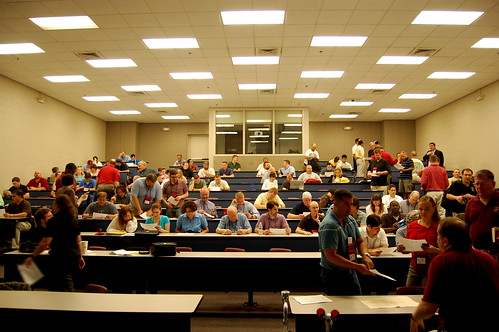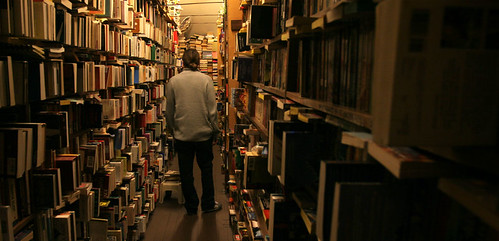Love Letter to New York City: N.K. Jemisin’s The City We Became
/The last couple of years have been a whirlwind for the science fiction and fantasy community, with a whole host of scandals like Sad/Rabid Puppies, Gamergate, and the Lovecraft / World Fantasy Award highlighting the need for the community to grapple with both the changing demographics of Fandom, but also the realization that the genre has deep-seated issues that it needs to work out if it’s going to remain around as a community.
We’re now starting to see those events trickle over into the content that the community is consuming. Books like Nnedi Okorafor’s Lagoon (inspired by Okorafor’s anger at racism in District 9), Chris Kluwe’s Otaku (a book that feels like it’s been inspired by the fallout of Gamergate), and now N.K. Jemisin’s The City We Became, a powerful punch of a book that pushes back against the systemic racism in the United States, and one that provides a counterpoint to the works and worldview of H.P. Lovecraft.
Jemisin has been a rising star within the world of fantasy literature, and in many ways, that’s made her a target for racist fans who dislike her stature, her views, and the fact that she won the Hugo Award for three years running for her Broken Earth trilogy. In her acceptance speech for The Stone Sky back in 2018, she addressed the struggle:
I have smiled and nodded while well-meaning magazine editors advised me to tone down my allegories and anger. (I didn’t.) I have gritted my teeth while an established professional writer went on a ten-minute tirade at me—as a proxy for basically all black people—for mentioning underrepresentation in the sciences. I have kept writing even though my first novel, The Killing Moon, was initially rejected on the assumption that only black people would ever possibly want to read the work of a black writer. I have raised my voice to talk back over fellow panelists who tried to talk over me about my own damn life. I have fought myself, and the little voice inside me that constantly, still, whispers that I should just keep my head down and shut up and let the real writers talk.
But this is the year in which I get to smile at all of those naysayers—every single mediocre insecure wannabe who fixes their mouth to suggest that I do not belong on this stage, that people like me cannot possibly have earned such an honor, that when they win it it’s meritocracy but when we win it it’s “identity politics” — I get to smile at those people, and lift a massive, shining, rocket-shaped middle finger in their direction.
The City We Became feels like a natural evolution of her career, a shift from second-world fantasy to an alternate version of our own world, one that’s all-too-painfully recognizable. in 2016, Jemisin published “The City Born Great”, a fantastic short story about the birth of an avatar for New York City — a manifestation of the city in human form, and the otherworldly horror that they face.
Jemisin has now expanded upon that shorter story, unfolding it like a piece of origami to show that a much greater story is at play. Now in novel form, that initial birth of New York City has gone wrong: the avatar has been hurt, and it’s hibernating, as the forces that worked so hard to take down the city regroup and prepare to strike again. New York, however, is a special place: it’s inhabited by not just one avatar, but one for each of its boroughs. Matty (Manhattan) arrives in the city only to forget his past and who he is; Brooklyn is a former rap star turned city councilwoman. Bronca (Bronx) is a tough Lenape woman who directs an arts center, Padmini Prakash (Queens) is an Indian student, and Aislyn Houlihan (Staten Island) is a young white woman who’s terrified of the others.
The enemy they’re facing off against is the Woman in White, who’s bent on destroying the city and all that it represents. She’s begun to infect the city with tendrils that seem to enhance people’s divisive urges, nudging them gently towards intolerance and bigotry. It seems as though she’s been at it a long time, setting up foundations that work to gentrify neighborhoods, backs racist artists trying to make high-profile viral “statements,” and so forth.
Unlike The Hundred Thousand Kingdoms and The Fifth Season, Jemisin sets up a story that’s far more straight forward: the five avatars have to figure out how to find one another and work together to save their home as the city is slowly taken over by the Woman in White and the otherworldly horrors that she brings with her. The novel is a fast read, but it’s no less weighty. Where Jemisin’s commentary on the world was wrapped up in second-world fantastic allegory, she brings out the message carved onto a two-by-four. It makes for a powerful read, one that puts forward not only the overt moments of racism against black people, but some of the more subtle ones as well.
In a lot of ways, the novel serves as a counterpoint to Lovecraft’s “The Horror at Red Hook” — it even directly references it. Lovecraft was famously xenophobic, and that story in particular focused his racist eye on the impoverished slums that were the Red Hook neighborhood. While it’s tempting to push Lovecraft to the side, refitting his brand of cosmic horror to work counter to his views is a delicious thing to read.
(Jemisin isn’t the first to address Lovecraft’s work: Victor Lavalle did that as well in his own novella The Ballad of Black Tom.)
If the five avatars represent New York City, the Woman in White is one for all of white America. The implications are readily apparent: a malevolent entity that seeks to subjugate and oppress others to maintain power. It’s imagery that Jemisin’s used before — (although I’m not sure if it’s expressly connected): the White Lady in her short story “Red Dirt Witch” — and it’s an extremely effective tool, particularly when she follows Staten Island, a young woman who’s surrounded by subtle and overt forms of white supremacy in a part of the city that’s a far cry from the diverse and liberal streets of its neighbors. Jemisin shows off how effectively insidious fear is as a means of division, something that plays out in a critical way by the end of the novel.
Reading this book over the last couple of weeks has been an interesting experience: I finished it right after a Minneapolis police officer killer George Floyd and after a racist woman called the cops when Christian Cooper asked her to leash her dog in New York City, and it’s been on my mind as protests have swept across the nation. There are so many points in the book that are drawn from the fabric of our world: angry white people who call the cops on “suspicious looking” neighbors, police officers who are connected to white supremacists, the weight of white America pushing down on the black and brown citizens of this country. It might be cosmic horror, but isn’t that pretty much what we’re living through now?
(Originally published on Transfer Orbit.)

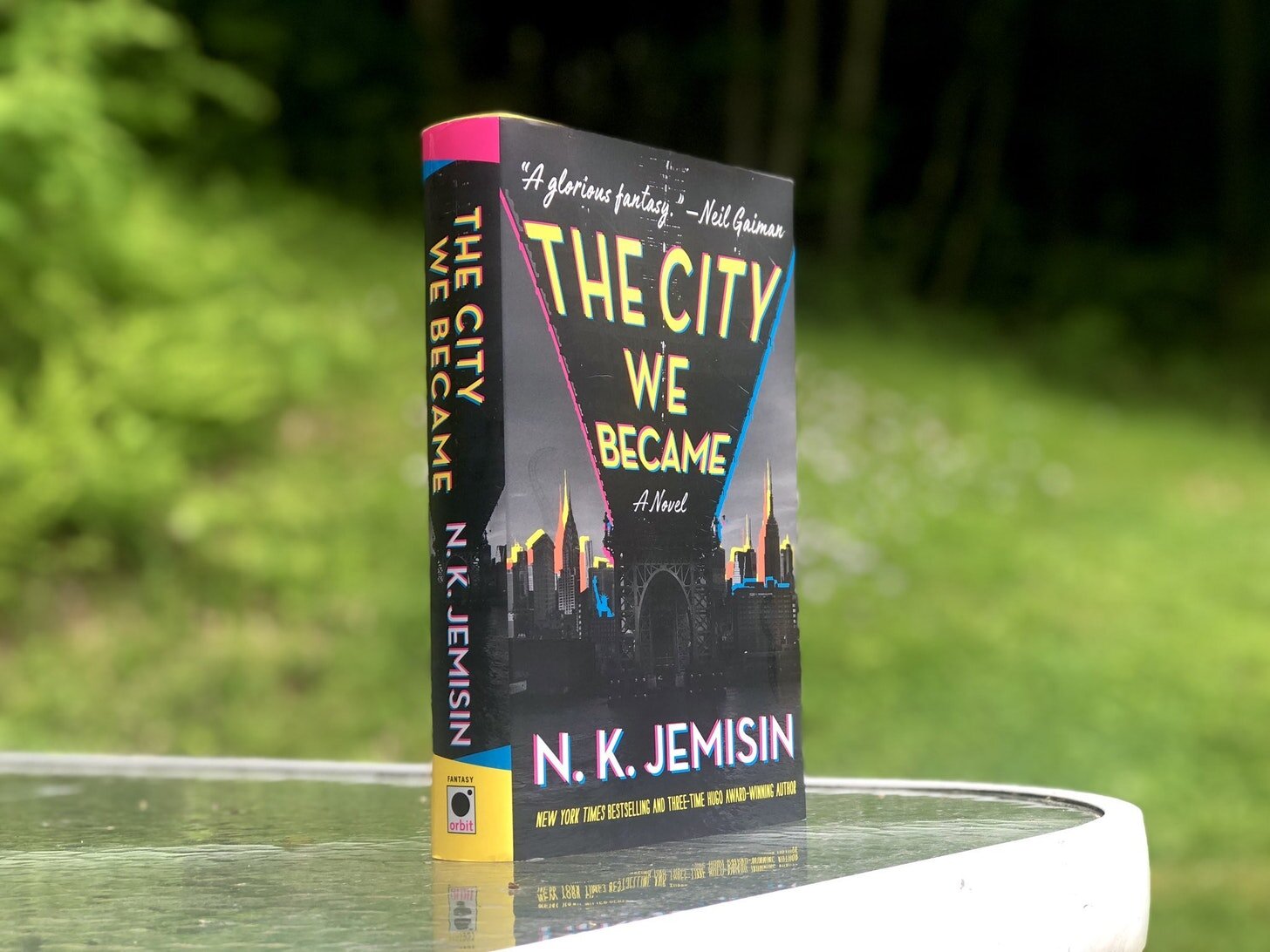

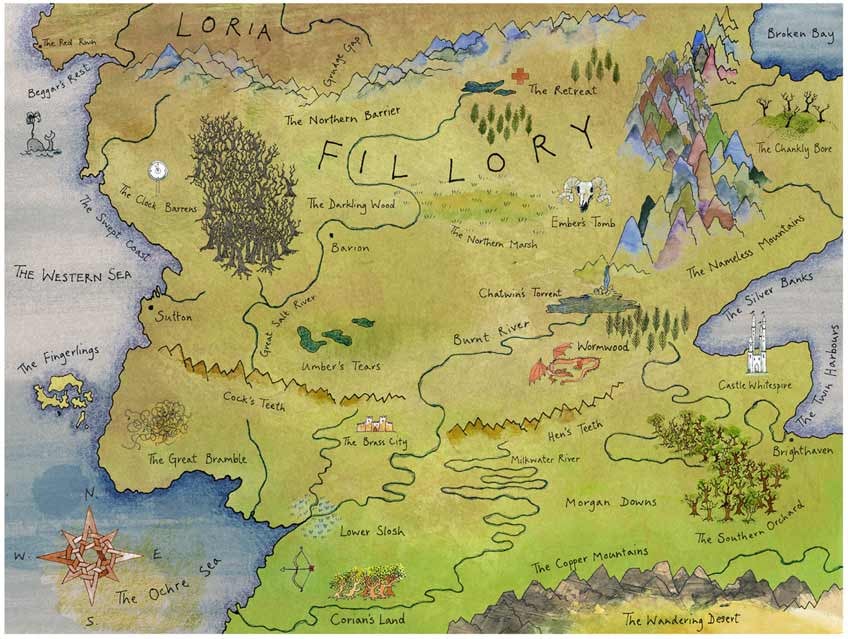 It's always cool to find previously unknown authors while doing research. Recently, I came across a relatively unknown fantasy author who had some close ties to some of the giants in fantasy: Christopher Plover. Famous for his Fillory and Further series, he's relatively unknown today. Recently, his works seem to have inspired one recent series of books, The Magicians trilogy, by Lev Grossman, who's latest book, The Magician's Land, came out earlier this week.
It's always cool to find previously unknown authors while doing research. Recently, I came across a relatively unknown fantasy author who had some close ties to some of the giants in fantasy: Christopher Plover. Famous for his Fillory and Further series, he's relatively unknown today. Recently, his works seem to have inspired one recent series of books, The Magicians trilogy, by Lev Grossman, who's latest book, The Magician's Land, came out earlier this week. In the middle of November, I talked about Tolkien's WWI experiences and their impact into their writing. With the live action adaptation of The Hobbit released into theaters soon, it makes sense to look at how The Hobbit was written in the first place. It's an interesting story, with a bunch of twists and turns.
Go read
In the middle of November, I talked about Tolkien's WWI experiences and their impact into their writing. With the live action adaptation of The Hobbit released into theaters soon, it makes sense to look at how The Hobbit was written in the first place. It's an interesting story, with a bunch of twists and turns.
Go read  With October's Horror duo over with, I decided that it was time to shift gears again in preparation for the really big fantasy event of the year: The Hobbit, and thus focus on some of the background on Fantasy literature, which I haven't really focused on thus far. Like Science Fiction, context for the development of Tolkien's works relies on an earlier look at what came before, and the notable author that I became interested in was George MacDonald, who really jump started the Fantasy genre by creating a number of modern fairy tales that inspired many fantasy authors that came before him. He's not a household name like Mary Shelley, Jules Verne or H.G. Wells, but he was no less influential in his works, which went on to inspire authors such as J.R.R. Tolkien and C.S. Lewis.
With October's Horror duo over with, I decided that it was time to shift gears again in preparation for the really big fantasy event of the year: The Hobbit, and thus focus on some of the background on Fantasy literature, which I haven't really focused on thus far. Like Science Fiction, context for the development of Tolkien's works relies on an earlier look at what came before, and the notable author that I became interested in was George MacDonald, who really jump started the Fantasy genre by creating a number of modern fairy tales that inspired many fantasy authors that came before him. He's not a household name like Mary Shelley, Jules Verne or H.G. Wells, but he was no less influential in his works, which went on to inspire authors such as J.R.R. Tolkien and C.S. Lewis.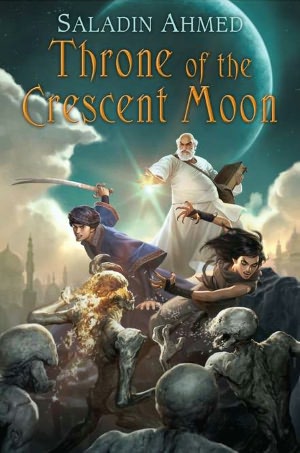 Saladin Ahmed's debut novel, Throne of the Crescent Moon has been getting a lot of attention since its release earlier this year. It's a fantastic novel, right out of the gate, gripping and engaging, but it's also been getting quite a bit of attention for its location. Epic fantasy set in a recognizable Middle East - inspired world; it's a far cry from the pseudo-Middle-Ages-European settings that most worlds seem to inhabit.
Saladin Ahmed's debut novel, Throne of the Crescent Moon has been getting a lot of attention since its release earlier this year. It's a fantastic novel, right out of the gate, gripping and engaging, but it's also been getting quite a bit of attention for its location. Epic fantasy set in a recognizable Middle East - inspired world; it's a far cry from the pseudo-Middle-Ages-European settings that most worlds seem to inhabit.
 This past weekend was Boskone 49, a science fiction / fantasy literature convention down in South Boston. After great experiences at ReaderCon the past couple of years, I decided to head down and partake in the fun for the spring, hitting up a bunch of panels and getting to meet up with people that I've largely talked to online over the past couple of years.
This past weekend was Boskone 49, a science fiction / fantasy literature convention down in South Boston. After great experiences at ReaderCon the past couple of years, I decided to head down and partake in the fun for the spring, hitting up a bunch of panels and getting to meet up with people that I've largely talked to online over the past couple of years. This year has been an interesting reading year for me, fluctuating between a bunch of really, really good books, and a couple that really sucked out any interest that I had in reading at that time, with a number of books in-between that I thought were fun reads. Here's what I got through in 2011:
This year has been an interesting reading year for me, fluctuating between a bunch of really, really good books, and a couple that really sucked out any interest that I had in reading at that time, with a number of books in-between that I thought were fun reads. Here's what I got through in 2011:
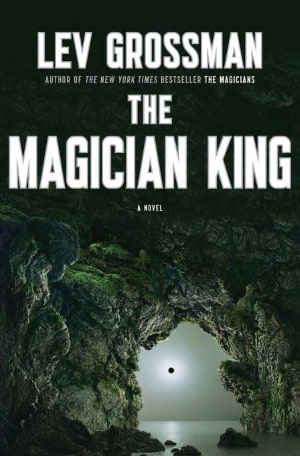

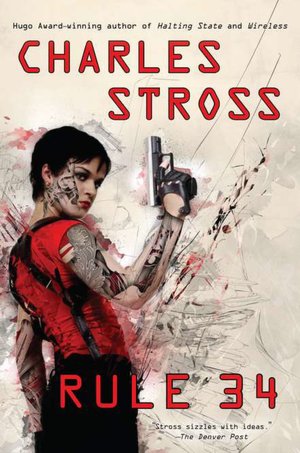
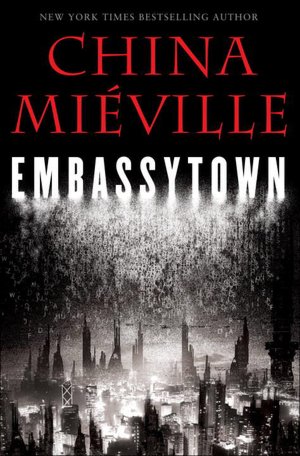
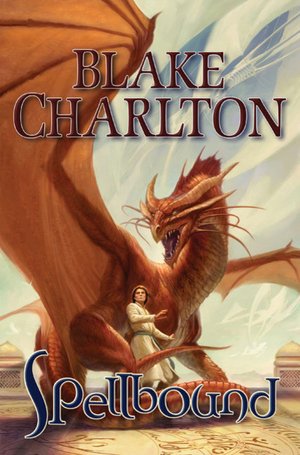





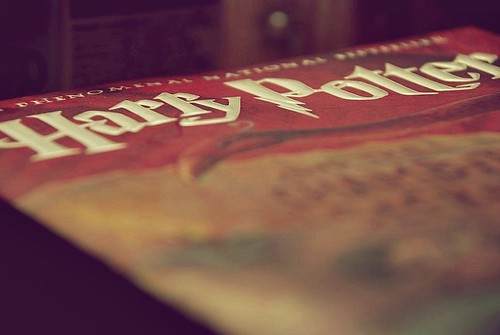
 It’s hard to mention the term Steampunk without also mentioning Cherie Priest’s Clockwork Century series, an alternate history of the United States, featuring all of the bells and whistles that comes with the territory. The first novel, Boneshaker, was well received, as was the short novella, Clementine, set shortly after the events of the first book, while the latest entry in the series (there are two more planned), Dreadnought, picks up the story across the country and helps to flesh out Priest’s strange alternate world. An interesting follow-up to Boneshaker, Dreadnought never quite reaches the same heights that its predecessor reached, nor does it quite feel as unique. As such, Priest brings out new elements to the Civil War only hinted at in the previous books, and tells a fun story, one that is sure to be popular with the steampunk crowd.
It’s hard to mention the term Steampunk without also mentioning Cherie Priest’s Clockwork Century series, an alternate history of the United States, featuring all of the bells and whistles that comes with the territory. The first novel, Boneshaker, was well received, as was the short novella, Clementine, set shortly after the events of the first book, while the latest entry in the series (there are two more planned), Dreadnought, picks up the story across the country and helps to flesh out Priest’s strange alternate world. An interesting follow-up to Boneshaker, Dreadnought never quite reaches the same heights that its predecessor reached, nor does it quite feel as unique. As such, Priest brings out new elements to the Civil War only hinted at in the previous books, and tells a fun story, one that is sure to be popular with the steampunk crowd.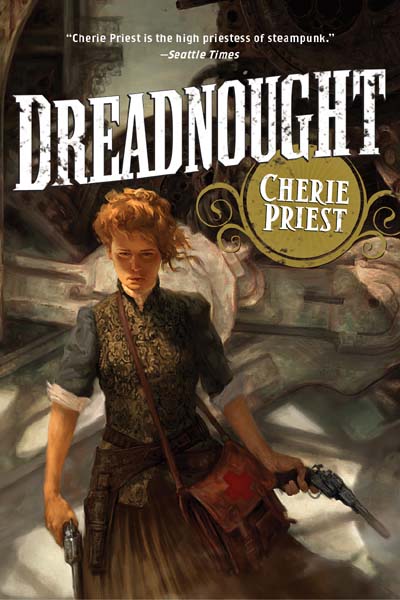
 "...and then what happened?"
"...and then what happened?"
